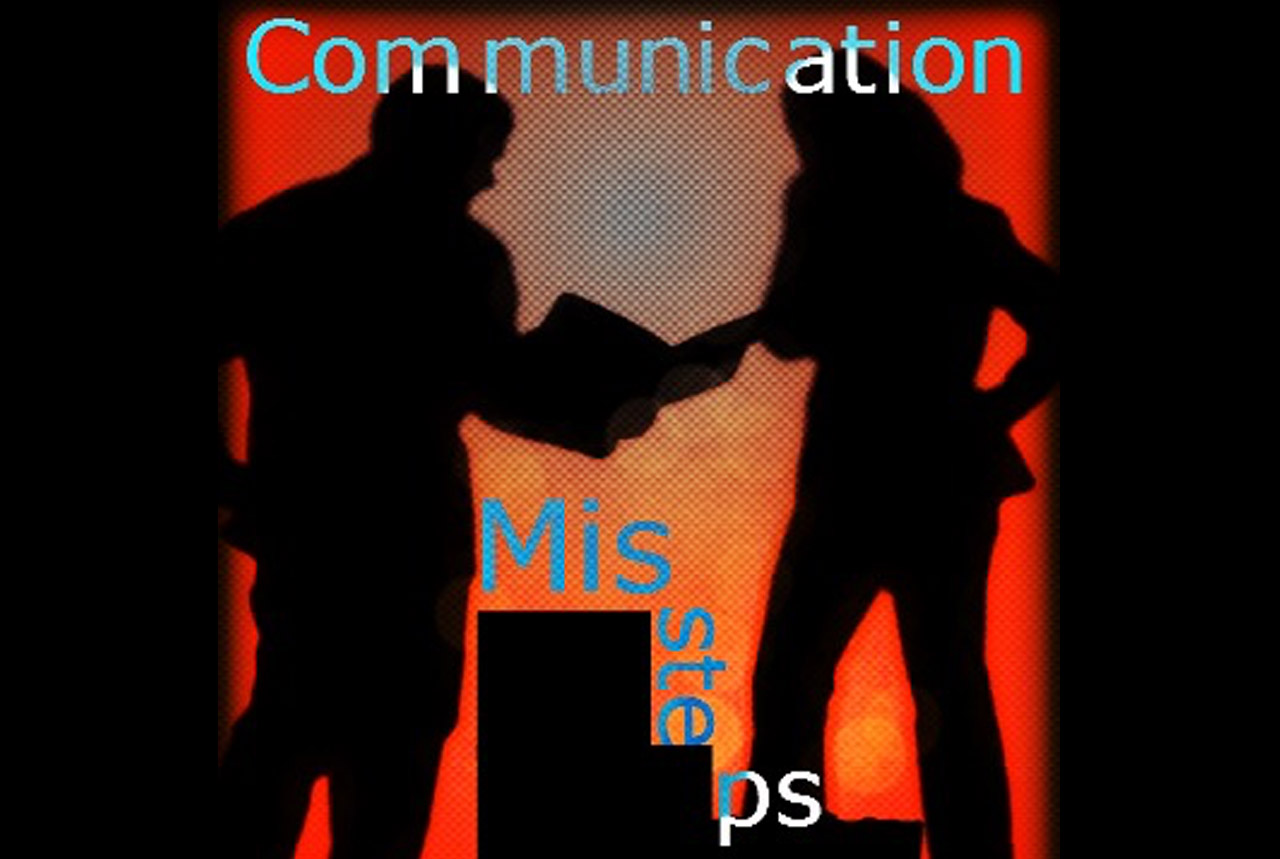Project management is more than just a beneficial skill; it’s a core competency that benefits…

Communication Missteps that Will Derail Your Project
Good communication is critical to successful project management. Not every project will come neatly packaged with harmonious interactions, clearly understood objectives and stakeholders who recall a set of events exactly as you do. The bottom line is that conflicts, misunderstandings and selective memories will occur.
Here are some communication missteps you can avoid to ensure that these common and inevitable realities don’t get the best of you and derail your project:
Failing to keep stakeholders and project sponsors apprised of current project status – Sometimes it’s easy to let the management of a project consume so much of our time that we overlook the need to keep stakeholders and project sponsors informed about the status. Always consider the possibility that if you aren’t providing a project status, regularly, someone maybe doing so instead of you, unofficially-and their status report may not be so favorable. You can easily avoid this misstep by including weekly or regular checkpoint updates in your project schedule and providing formal status reports on a regular basis.
Using e-mail when face-to-face communication is needed– It’s so easy to send an e-mail without any thought for whether or not it’s the right communication channel. Although e-mails and texts are very efficient, they are not always the best means for communicating difficult or sensitive information or to clear up persistent misunderstandings. In-person discussions provide an opportunity to build relationships. Successful project managers build trust and credibility, in part, by using the best communication channel for every situation. I was once in a program level status meeting when one of the Project Leads reported on an issue that had been “open” for over 2 weeks. The Project Lead reported that he’d called the issue owner several times, left multiple messages, and several emails and had not received a single response from this person. Finally a member of the Steering Committee very candidly asked him, “And how many times did you walk downstairs to his office?” With a lot of hesitation, and I’m sure a bit of shame, the Project Lead responded… “None.” Don’t make this mistake.
Addressing conflicts when it’s too late – Fear of confrontation, trivializing small conflicts, and the lack of conflict management skills are the primary reasons project managers make this misstep. To deal with fear, remember, your role is to confront the issues not the people. As the project manager, you can help educate stakeholders about the impact that unresolved conflict will have on the project’s success and then encourage those involved to work toward resolution. To learn conflict management skills, consider taking a course in mediation or dispute resolution. Finally, recognize the early signs of conflict so you can address them early. Some warning signs might be passive-aggressive behavior, derogatory remarks or a sudden drop in team input and interaction levels.
Not checking for understanding when you feel you’ve communicated effectively – After sending an important written report or communication or at the end of a meeting, make it a practice to ask if there are any questions and to get a general feel for what others “think” you said or wrote. Don’t hesitate to be explicit when providing instructions and coaching. When in doubt “spell it out.”
Surprises – No one likes surprises on a project. The recent debacle with the rollout of healthcare.gov is a painful reminder of how devastating surprises can be. When an important deadline can’t be met, by all means let the stakeholders and team sponsors know ahead of time. If possible, prepare a contingency plan to address the missed deadline. When a team member or stakeholder is responsible for contributing to the project at a certain point, remind them so they won’t be caught off guard; don’t assume they will remember. I receive a good piece of advice years ago from an excellent Program Manager: It’s better to get “good help” now than “bad help” later. Asking for help or raising issues early allows time for supportive involvement from stakeholders rather than last minute status on issues so far gone that they are now detrimental to the project.
As projects become increasingly more complex, effective communication is a skill and art that project managers must master. Communication not only keeps everyone informed, but helps them stay interested and invested in the project’s success. Be sure to develop a communication plan during the early planning stages of your project. In it, factor in considerations for the number of communication channels you’ll need.
Communication Channels: The PMI encourages project managers to calculate the number of communication channels (or paths) between members of your project. To do that, you can use the formula N(N-1)/2 where N = number of project members impacted by the project (including stakeholders and team members). The result of this formula is the number of communication paths that exist among project members.
For example, if you have 11 project team members, your formula would look like this: 11(10)/2 or 110/2 = 55 different communication channels on your project. You can’t leave good communication to chance when you have 55 different communication paths going on at any given time. These communication paths should be considered when developing a communication or stakeholder management plan.
Chrystal Richardson is Managing Partner of CE Wilson Consulting, a project management and business efficiency consulting firm that has managed projects for technology, mining, medical and manufacturing clients since 2001.




